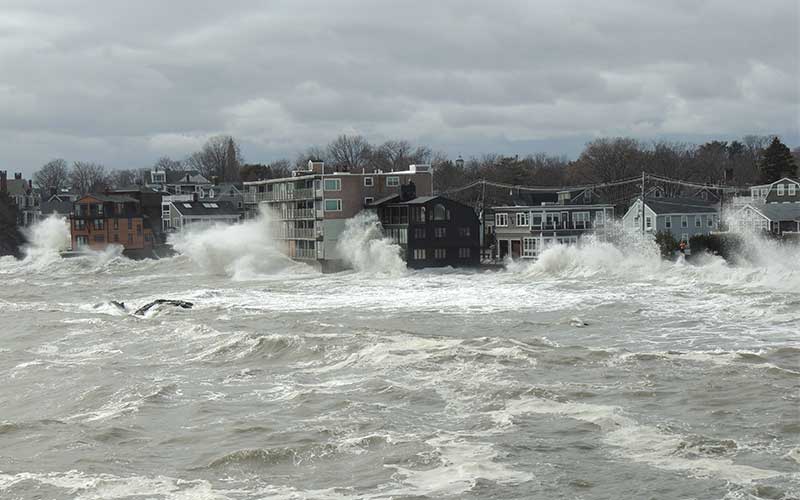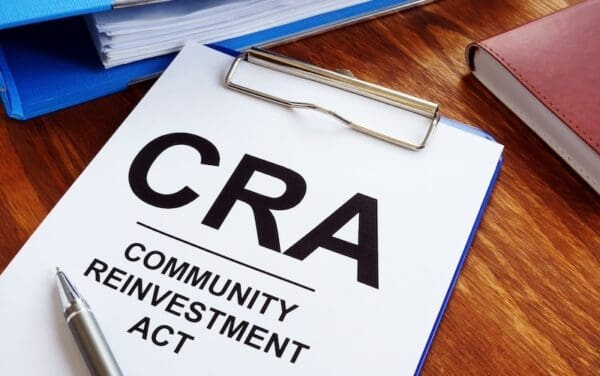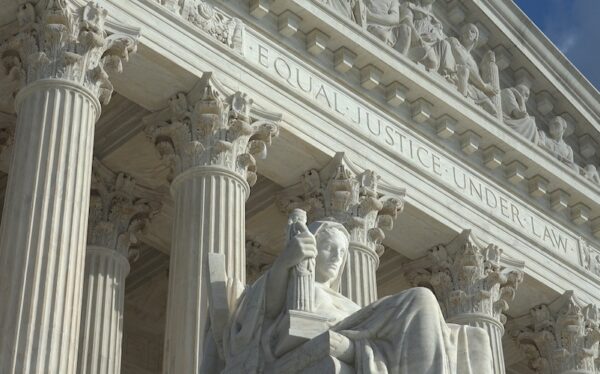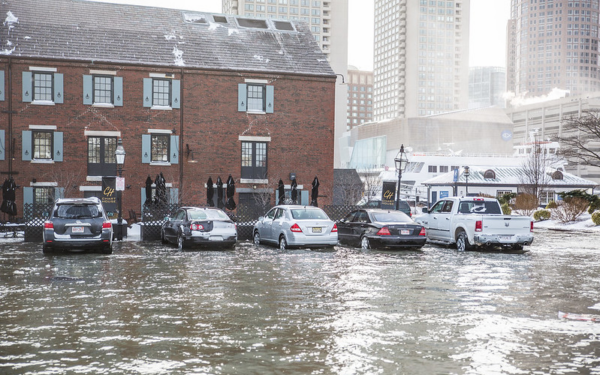
CLF is pushing to strengthen building codes to take into account the increased risks from flooding and other climate impacts. Photo: Erik K. Smith via Shutterstock
With spring now here in Massachusetts, I’m looking forward to the second half of that old saying, “April showers bring May flowers.” I’m enjoying the beautiful blossoms and warmer temperatures, but the first part of that phrase weighs on my mind.
Heavy rain any time of year brings a lot more than flowers. It can mean flooded streets and basements and disrupted commutes. At its worst, it can destroy homes and upend people’s lives. Recent storms like the Nor’easter of 2018 and Hurricane Ida loom large in my memory. Storms like those will only grow more frequent and more dangerous due to our changing climate. We must be ready for them.
Unfortunately, Massachusetts isn’t as prepared for these flood risks as it should be. The state building code is supposed to set minimum safety standards for all residential and commercial buildings statewide. But the code doesn’t consider the increasingly severe impacts of climate change. My team at CLF has been pushing the Commonwealth to address this oversight. Earlier this week, the Board of Building Regulation and Standards (BBRS) reviewed our proposal to strengthen codes to account for climate change impacts. They will vote on whether to approve our proposal during the first week of June.
You can help push forward these common-sense updates. Contact the board and tell them you want to make sure all new homes and businesses will withstand climate impacts.
Massachusetts’ State Building Code Needs Three Practical Updates
We made three specific recommendations to the Board to ensure that new buildings are ready to withstand flooding for years to come.
1. Massachusetts building code needs a strong variance process.
The state building code sets out safety guidelines for buildings, including construction in flood-prone areas. If a builder wants an exemption from any of its requirements – for example, constructing a home to a lower-than-required height above floodwaters – they must request a “variance.” The State reviews and approves variances on a case-by-case basis. Because these requirements are created with public safety top of mind, regulators must consider any exception very carefully. Right now, Massachusetts has no set process for deciding whether or not to grant a variance in flood areas.
That must change. The State needs a consistent process and criteria for approving variances. This way, we can ensure they are granted only in special circumstances, and builders are not allowed to circumvent flood standards.
To create a more consistent process, we recommend that Massachusetts adopt National Flood Insurance Program guidelines. That would help ensure that any exceptions won’t put public safety at risk. What’s more, the federal government requires communities participating in the National Flood Insurance Program to have variances procedures, so Massachusetts is currently in noncompliance with federal law.
2. Massachusetts needs higher minimum elevation requirements to prepare for flooding.
“Freeboard” refers to the additional height added to a building to keep it above floodwaters. The State currently requires a minimal amount of freeboard. We recommend that the building code add another foot of freeboard for buildings in floodplains. This move is smart for two reasons: It helps avoid flood damage and can result in much lower flood insurance rates.
Many places around the country are already taking such action in response to major storms. For example, Houston, Texas, increased freeboard requirements following the destructive flooding caused by Hurricane Harvey.
But we shouldn’t wait until a disaster strikes before taking these needed precautions here in Massachusetts. We already know that flooding poses a severe risk across the Commonwealth. Increasing the freeboard requirement now to avoid future damage is the right thing to do.
Many Massachusetts communities, including Boston, already require higher freeboard standards because they recognize the risk. Incorporating this requirement into the state building code would ensure that all cities and towns statewide have climate-safe elevation standards.
3. Cities and towns should be allowed to mandate flood-safe construction in current and future floodplains.
Currently, flood-safe construction standards (like the type of materials that can be used to construct a building) apply only to the Federal Emergency Management Agency (FEMA) designated floodplains. There’s just one problem – many FEMA maps are inaccurate because they’re based on old data from the 60s and 70s. And none consider climate change risks. Instead, they rely on historical weather patterns – not projected climate conditions.
This is a serious issue that even the federal government has identified as a concern. In fact, in Massachusetts, an estimated 65% more properties are at risk from flooding than FEMA’s maps show.
Many cities and towns are aware of this problem. In response, they have done their own mapping to estimate the extent of their current and future floodplains. But because the state building code is based on outdated FEMA maps, it is unlawful for communities to require flood-safe construction standards in these expanded areas.
Cities and towns should be able to apply flood protections where needed. We recommend that the state building code allow communities to use better data and maps to identify flood risk areas. They should then be allowed to apply existing flood-safe construction standards in those areas.
The Board of Building Regulation and Standards is “Considering” Our Recommendations. Now What?
The state building code can act as a powerful tool to protect us from the impacts of climate change, but not as it currently stands. The code gets updated every few years, and the latest edition will likely go into effect in early 2023.
The Board of Building Regulation and Standards must factor flood risks from a changing climate into the revised code. Only by doing so can we ensure that buildings planned across Massachusetts – and everyone who lives and works in them – are safe.
The Board will accept public comments on the new building code proposal until June 8, 2022. You can help push climate-safe regulations by urging Board members to adopt our recommendations. Send your comments by email to dan.p.walsh@state.ma.us and use the subject line “Public Comment on CLF Building Code Proposal for Climate Risk.”
Thank you for taking action.




